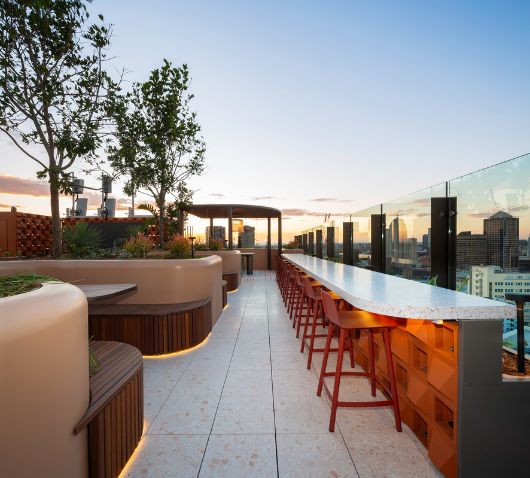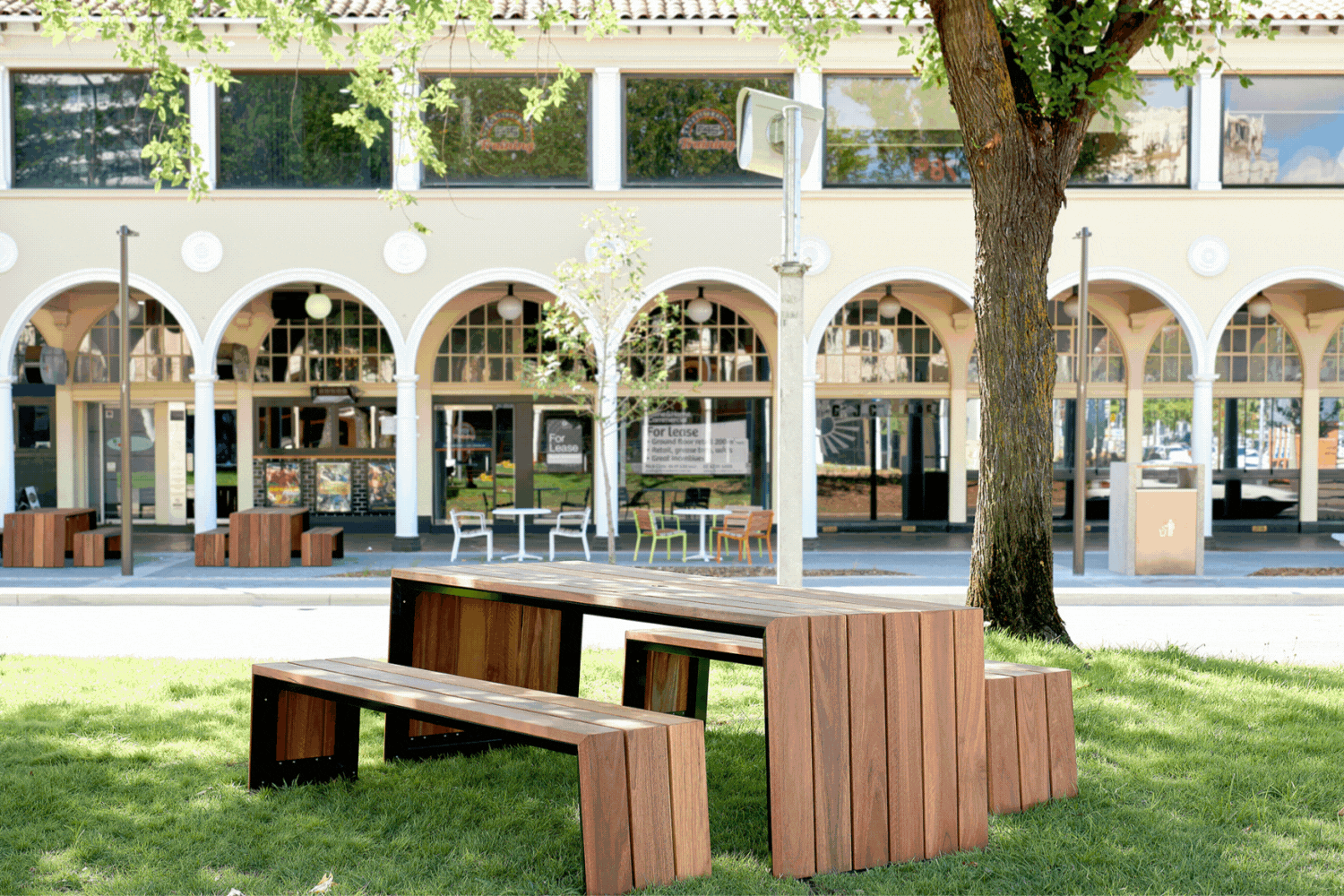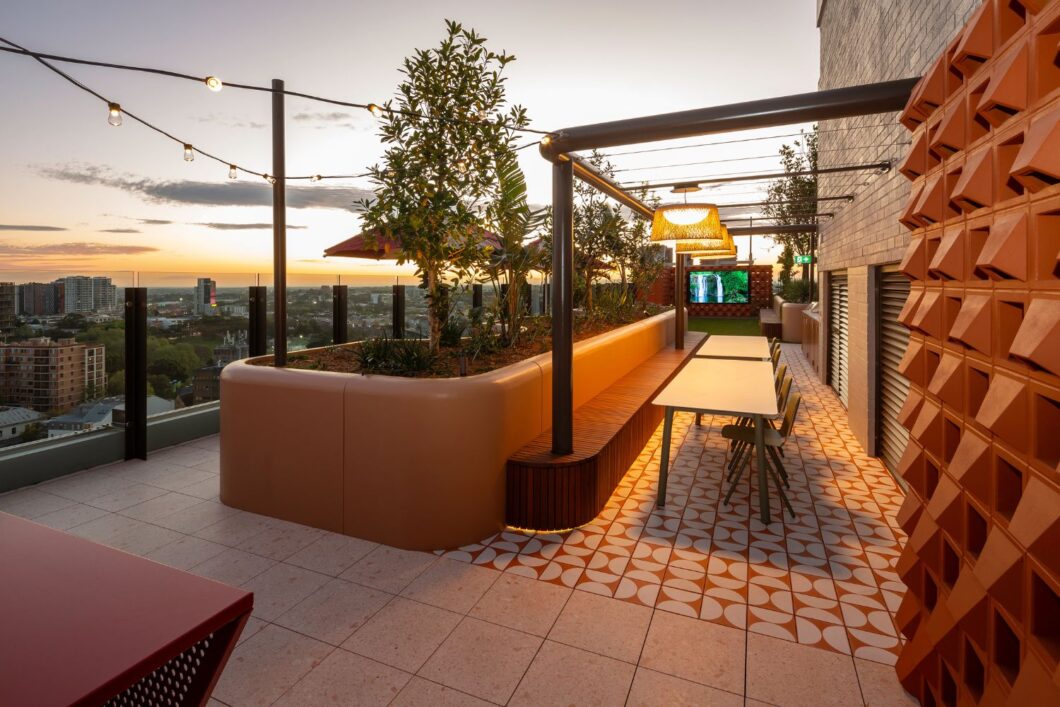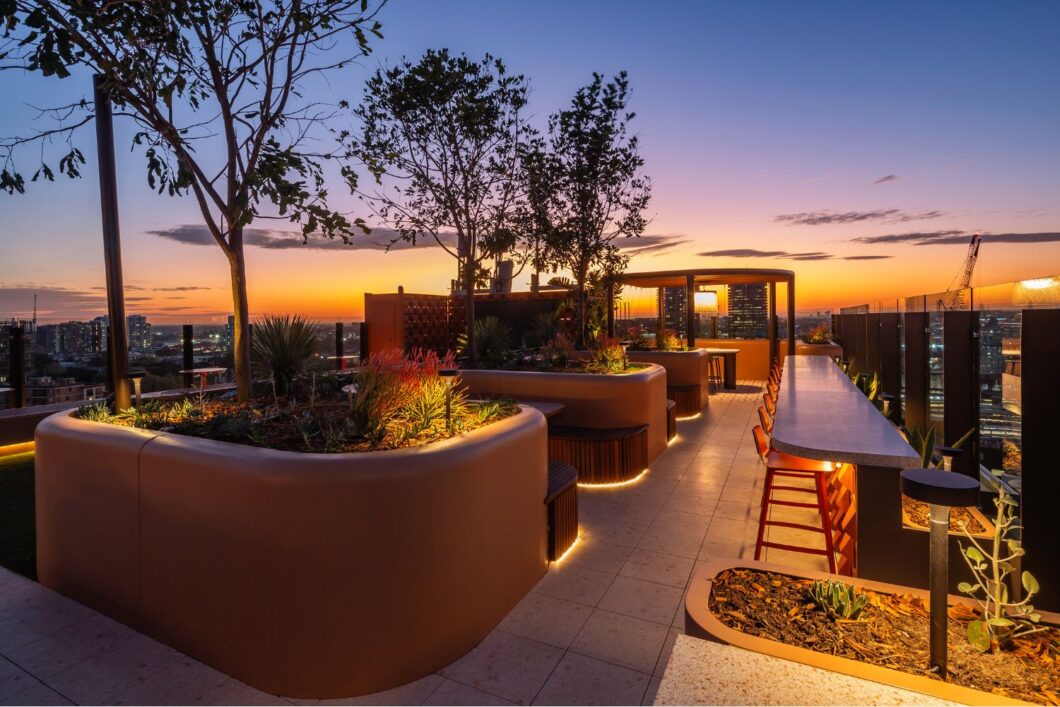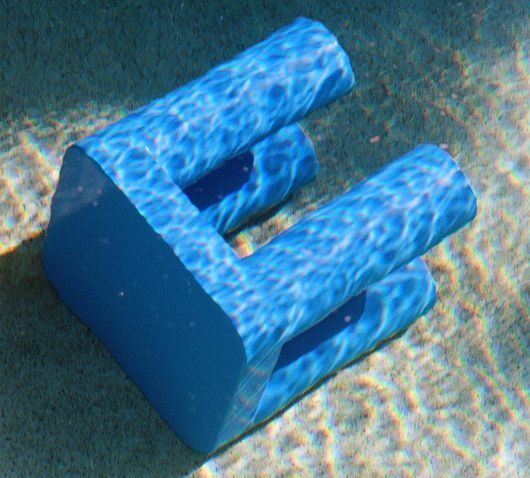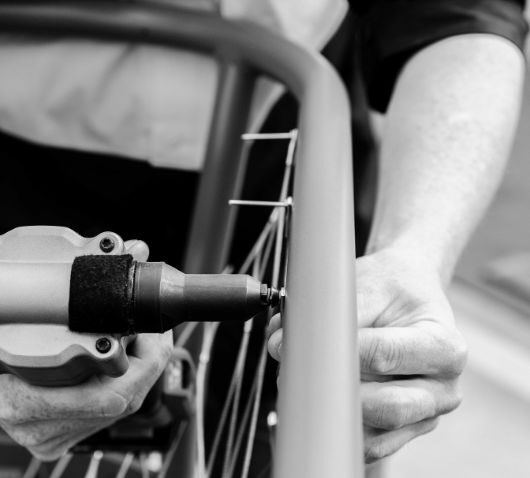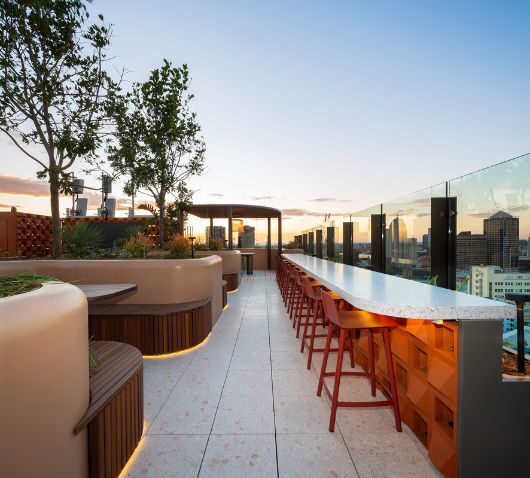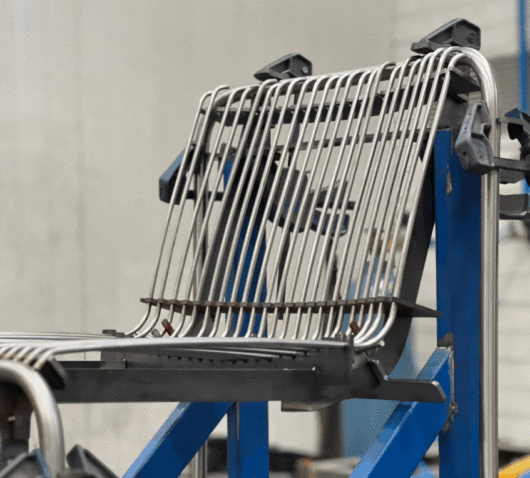How do they work?
Basically, fixation prevents a product from being moved by a user or an environmental factor like wind. We offer two main types of fixation:
Tether: Using a rubber coated metal cable to attach the product to a substrate i.e. the ground or a table.
Concealed fixing: For products that have a hollow leg (eg. Linear Table) we make a concealed bracket that goes inside the leg and attaches to the ground
If neither of these methods will work with the particular project requirements, we can explore alternative visible fixing options.
Weighting a product involves adding additional weights to a product, predominantly to prevent it from being moved by wind. If the product allows, we can conceal steel bars within the frame (steel is used for its heavy weight, whereas aluminium bars would not offer enough additional weight). For the Rockpool range of seating, for example, we have designed steel bars that get bolted under the seat panel. This means extra weight and stability is added, whilst maintaining the elegant aesthetic of the design.
